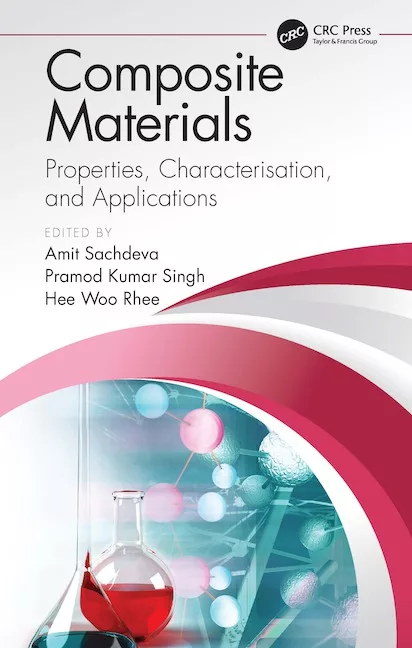High-Performance PU Crosslinkers for Two-Component Waterborne Applications

Two-component solventborne polyurethanes are the benchmark standard for high-performance coatings in the majority of coatings markets. For the formulator the advantages include:
- wide formulation latitude due to the variety of co-reactants and crosslinkers available;
- high-quality appearance;
- UV stability and weatherability using aliphatic polyisocyanates;
- chemical and solvent resistance; and
- hardness, flexibility, and toughness due to the urethane and urea linkages.
One way to improve this situation was to use a polyisocyanate crosslinking agent. The first polyisocyanate crosslinkers were introduced in the early 1990s to much skepticism. Then and today, the challenge in waterborne systems is to effectively disperse a reactive system in water and retain high-performance properties. Due to ongoing research and development, properties of 2K-waterborne PUR coatings have constantly been improving. So today’s waterborne PUR systems show equal, or sometime even better, overall performance than comparable solventborne systems.
Market/Performance Drivers
From its introduction the market drivers for two-component waterborne PU systems have undergone a transformation. Initially the drivers were achieving low VOC, low odor, easy application and clean up. The uniqueness of this chemistry and the ability to meet these demands resulted in Bayer MaterialScience being awarded an EPA Green Chemistry Award in 2000. As the markets have matured higher demands have been placed on these systems and the challenges have been met by ever-improving systems. Most recently the dominant driver has been to match 2K-solventborne characteristics wherever possible. This has been seen most in areas requiring chemical and stain resistance, applications requiring fast drying characteristics, unique film properties like soft touch, and good adhesion to difficult substrates such as various plastics and wood.Resin Design - Co-Reactants and Crosslinkers
Extensive resin design has taken place to allow 2K-waterborne polyurethane systems to reach their current state of performance. Work had to be done on both the resin or Bayhydrol® polyol portion, as well as the Bayhydur® polyisocyanate crosslinkers. Either research thrust would make for interesting reading. However, the focus of this report is to discuss the chemistry and development of the polyisocyanate crosslinkers that have been introduced from the early 1990s until today.A number of properties are important to coatings formulators. One of the important properties of coatings is their clarity and overall appearance. The importance of effectively dispersing an isocyanate crosslinker can be easily demonstrated simply by observing the appearance of two similar systems.

Dispersibility Importance
In this first example it can be seen that a standard hydrophobic polyisocyanate is not properly dispersed in the polyol dispersion when using a hand mix application. In the electron microscope picture on the right in Figure 1 the undispersed domains of polyisocyanate in the polyol matrix are plainly visible. On the left in Figure 1 an actual film is laid over the top half of the system label. The poor dispersion of the polyisocyanate is demonstrated by the opacity of the film.
Water-Dispersible Development
The development of water-dispersible polyisocyanates can take a couple of different conceptual approaches. One of the first is whether an internal or an external emulsifying agent should be used. A wide range of surfactants are available commercially. However, at Bayer MaterialScience the decision was made very early on to focus on internal emulsifying agents. It was felt that using external surfactants could lead to problems such as blistering, decreased water resistance and blushing. This is mainly due to the ability of an external surfactant to migrate through the coating to the surface.
Generation 1 Products
Since an internal surfactant is reacted into the backbone of the polyisocyanate resin it does not have the ability to migrate through the coating. Conceptually, either an ionic or non-ionic emulsifying agent could be used. The initial development work was focused on modifying HDI polyisocyanates with monofunctional hydrophilic polyethers as the emulsifying agent. These were incorporated into the standard hydrophobic polyisocyanate crosslinker through a urethane linkage. This was the first generation of hydrophilic products (Figure 3). The generic structure shown is based on an HDI isocyanurate trimer.Generation 1 products based on HDI have a good overall blend of properties. They are relatively easy to disperse and they form stable emulsions. They have good reactivity and can be used in a wide range of formulations. By varying the MW and amount of polyether it is possible to achieve higher chemical resistance at the expense of ease of dispersibility. It is also possible to use lower viscosity starting polyisocyanates to get a lower-viscosity, water-dispersible crosslinker. This improves dispersibility, but can also lead to a somewhat lower functionality. Another feature of this product line is the ability to tailor the products for adhesive applications, having higher functionality and less water sensitivity. Even today the majority of development effort has been done with HDI-based products.
Finally, the Generation 1 products have been produced using IPDI-based polyisocyanates. This crosslinker is a high Tg material that can be used in automotive refinish applications, for instance, to yield fast-drying coatings having high hardness. This type of crosslinker is supplied in solvent to keep it liquid and has a lower reactivity than the HDI-based materials.

Generation 2 Products
Generation 2 products were developed with an eye toward making a step change increase in the overall properties of the final coating. The monofunctional hydrophilic polyether used to modify the starting polyisocyanate is incorporated into the water-dispersible crosslinker through an allophanate linkage instead of a urethane (Figure 4).This allows the use of less polyether, while obtaining a higher level of dispersibility. Correspondingly, this reduces the water sensitivity of the final film because there is less polyether incorporated. Finally, the crosslinker has a higher functionality resulting in better chemical resistance and hardness, with faster property development.

Generation 3 Products
In the most recent developments, a new approach has been taken. Instead of using non-ionic internal emulsifying agents, the use of ionic emulsifiers has been pioneered. These can be reacted into the resin backbone similar to the approach taken with the Generation 1 and 2 products. Using a unique sulfonic acid these are reacted in using a urea linkage. The urea linkage provides additional hydrogen bonding contributing to the overall properties of the system. This unique combination results in improved dispersibility combined with higher hardness and comparable, or even improved, chemical resistance relative to the Generation 2 products. In addition to a higher NCO content, these products also give lower water sensitivity relative to the non-ionic emulsified crosslinkers. Similar to a polyurethane dispersion, the neutralization amine shown in Figure 5 evaporates, leaving a lower residual hydrophilicity in the final coating. Therefore, long-term water sensitivity of Generation 3 products is reduced relative to Generation 1 and 2 products.A final area of development has been the use of low-viscosity HDI polyisocyanates as blending partners for water-dispersible and hydrophobic systems. By reducing the viscosity of the final crosslinker mixture, the ease of dispersing any system is improved. This is true whether you need to hand mix your ingredients or whether you are mixing a hydrophobic crosslinker into a waterborne system to achieve the highest level of performance available.

Formulation Considerations
The generic formulation found in Figure 6 has wide utility. By adjusting the ingredients it can be tailored to meet a wide variety of performance targets. The main ingredients are the polyol and the polyisocyanate crosslinker. The greatest ingredients by weight are the polyol emulsions. These come in a wide variety of chemical compositions. By careful selection, a formulator can vary hardness, chemical and corrosion resistance, film forming temperature, ease of pigmentation, weatherability, feel, VOC, and cost.The second ingredient by weight is the polyisocyanate crosslinker. This is the enabling technology that allows the formulation of 2K WB PU systems. Careful selection of the crosslinker has a strong effect on ease of dispersibility, property development, chemical resistance, water sensitivity, cost, potlife and VOC.


Application Examples/Performance Advantages
A wide variety of formulating latitude is available to a formulator when working with 2K-waterborne polyurethane coatings. This allows tailoring the formulations to meet vastly different target markets and performance criteria.As discussed at the beginning, one of the current market drivers is getting waterborne systems to meet the performance standards set by 2K PU solventborne coatings. Some of the recent areas where 2K WB PU coatings are having success and their performance benefits are shown in Figure 8.
Conclusions
It is clear that we have come a long way from the early skepticism that this technology was greeted with when it was first introduced. There has been a great deal of developmental effort put forth into optimizing both the co-reactants and polyisocyanates necessary to make this technology feasible and allow it to reach the high standards of performance that we have come to expect from polyurethane coatings.In this work, a quick overview of WB polyisocyanate crosslinker development and how each generation has furthered the performance window of 2K WB polyurethane coatings has been presented. Obviously this is complimented by the ongoing development of waterborne coreactants. However, the enabling technology for this area is the performance of the variety of hydrophilic polyisocyanate crosslinkers available. There is a wide range of formulating expertise that allows the tailoring of properties for a multitude of applications for coatings, adhesives and sealants. As we expand upon this, it will allow us to continue to meet ever more stringent requirements from both legislation regarding VOC and HAPS, and market needs for improved performance, user friendliness and “green” characteristics.
For further information, contact Myron Shaffer at 412/777-7658 or e-mail: myron.shaffer@bayerbms.com.
Looking for a reprint of this article?
From high-res PDFs to custom plaques, order your copy today!







